A look at the top findings from our recent studies.
By Larry Basinait
Industry research is core to human capital management and decision-making. That is why the HRO Today research team has recently taken a deep dive into several topics that present challenges to HR professionals: artificial intelligence, tech innovations, employer brand, and more. Here, we share some of the top findings -the full version of the reports can be found here.
BITS DON’T BYTE
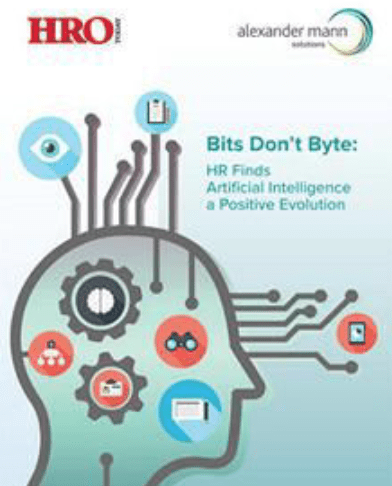 Artificial intelligence (AI) refers to systems that can adapt their functionality without being explicitly programmed to do so based on the usage data they collect. As a tool used to guide and execute HR processes, AI has enormous implications. Intelligent technology can be used to help HR leaders source candidates, forecast employee flight risk, identify high-potential employees, prevent bias in hiring, improve the candidate and employee experience, and implement corporate learning programs -and that’s not even all of it.
Artificial intelligence (AI) refers to systems that can adapt their functionality without being explicitly programmed to do so based on the usage data they collect. As a tool used to guide and execute HR processes, AI has enormous implications. Intelligent technology can be used to help HR leaders source candidates, forecast employee flight risk, identify high-potential employees, prevent bias in hiring, improve the candidate and employee experience, and implement corporate learning programs -and that’s not even all of it.
In order to determine the prevalence of AI adoption in the HR industry and its impact on business results, HRO Today partnered with Alexander Mann Solutions to conduct a survey. It found that artificial intelligence used for HR processes remains in the early stages of adoption, and its earliest penetration has been among larger companies. Just over one-half (57.4 percent) of respondents have been using AI in HR for a year or less, and on average they’ve employed AI in the human resources department for just 13.1 months. Companies with 10,000 or more employees are three times more likely than those with less than 500 employees to be using AI and twice as likely to have plans to implement it in the next two years.
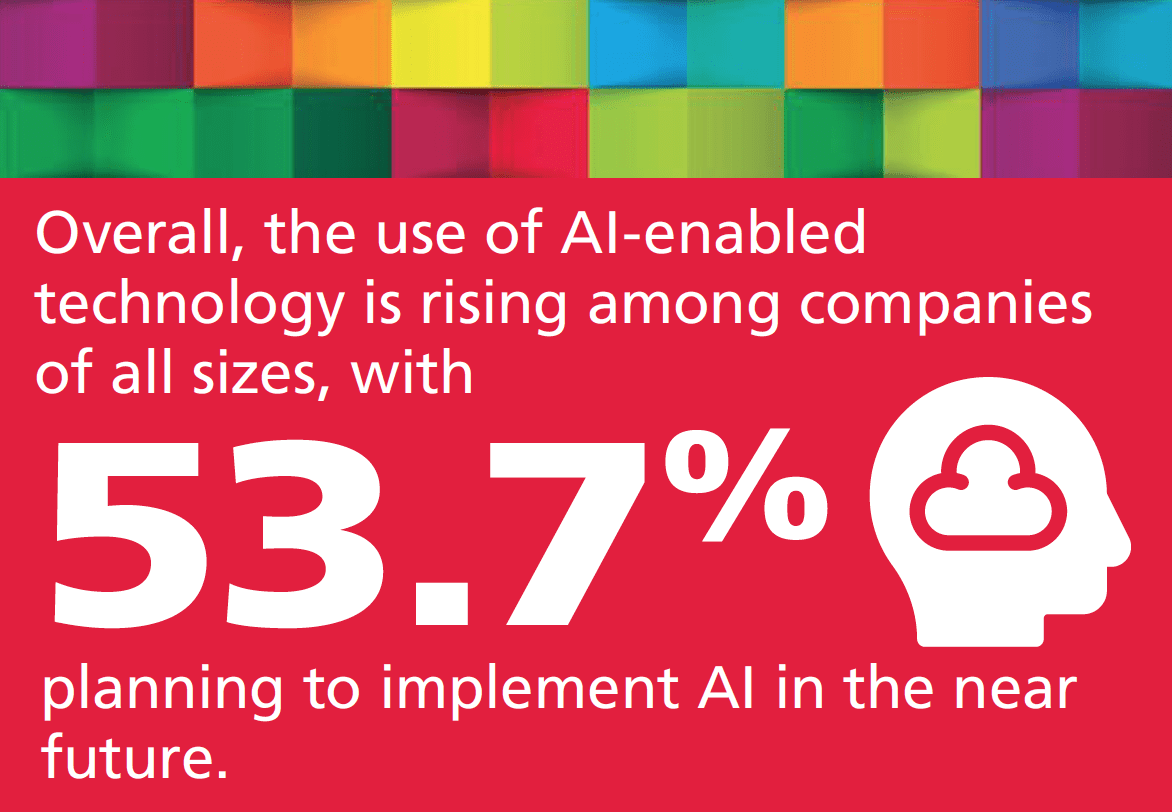 The most commonly expected benefits from AI are most often reduced time to fill and cost. But AI can go beyond those standard metrics of HR productivity, delivering value-added benefits like improved candidate experience. In fact, improved candidate experience was the third most anticipated benefit among HR professionals, and one that is already being realized.
The most commonly expected benefits from AI are most often reduced time to fill and cost. But AI can go beyond those standard metrics of HR productivity, delivering value-added benefits like improved candidate experience. In fact, improved candidate experience was the third most anticipated benefit among HR professionals, and one that is already being realized.
The use of AI in human resources is still in infancy but will only continue to grow in adoption and scope going forward. Currently, the technology has the greatest impact on areas related to business productivity, where expectations are well defined and the recommendations are straightforward and not heavily nuanced. In the future, expectations will be broader but all applications of the technology -as well as relationships with candidates and hiring managers alike -will still require a human touch.
See more here.
HR AND HIRING MANAGERS EYE-TO-EYE
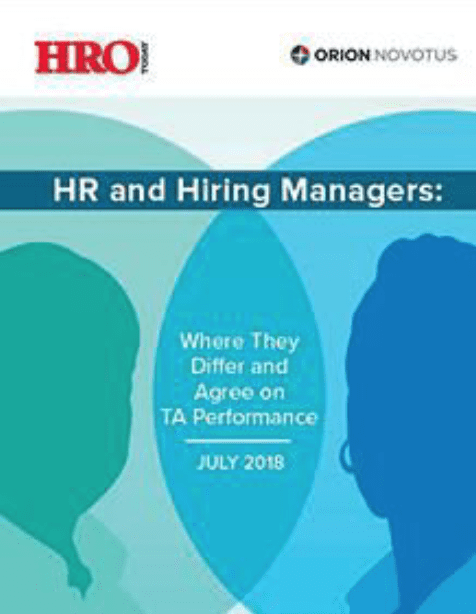 In a time when worldwide unemployment rates are reaching historic lows, recruiters are under increasing pressure to fill positions quickly. Hiring managers, faced with their own challenges, are not always the most sympathetic partners in the hiring process. But how do they really feel about the state of recruiting in their company? How do HR recruiters‘ opinions about the internal hiring process vary with hiring managers, and how do both groups feel about each other and the support of their mutual goals? This report shows where hiring managers and recruiters agree and where they differ.
In a time when worldwide unemployment rates are reaching historic lows, recruiters are under increasing pressure to fill positions quickly. Hiring managers, faced with their own challenges, are not always the most sympathetic partners in the hiring process. But how do they really feel about the state of recruiting in their company? How do HR recruiters‘ opinions about the internal hiring process vary with hiring managers, and how do both groups feel about each other and the support of their mutual goals? This report shows where hiring managers and recruiters agree and where they differ.
In order to determine the opinions of both hiring managers and HR recruiters, HRO Today conducted a research study sponsored by Orion Novotus to survey both hiring managers and recruiters. Overall, satisfaction scores from both hiring managers and recruiters are high, with an average score of 4.23 out of 5.00. Recruiters underestimate hiring manager satisfaction, indicating they’d expect a rating of 3.71 for the talent acquisition support they receive. A finding consistent throughout the specific areas of this study is that hiring managers are more satisfied with each of the TA processes than recruiters feel they will be. This perception may be the result of negative verbal feedback, lots of complaints, and too few compliments given to recruiters. But both parties agree there’s still considerable room for greater satisfaction, and improved deliverables.
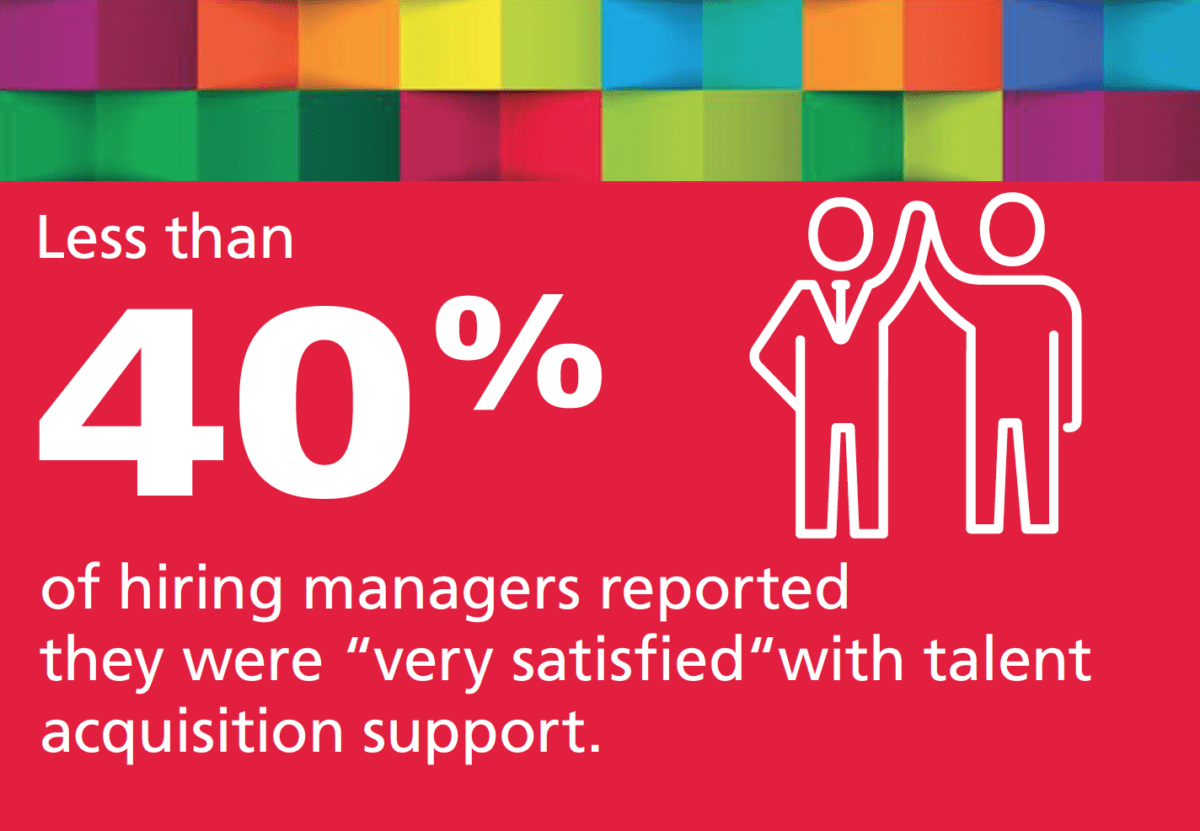 Optimal communication between hiring managers and recruiters is essential. However, less than one-third (31.1 percent) of hiring mangers and only 13.3 percent of recruiters “agreed completely” that there is an appropriate level of communication between the two groups, which is a mediocre level of agreement for such an important area.
Optimal communication between hiring managers and recruiters is essential. However, less than one-third (31.1 percent) of hiring mangers and only 13.3 percent of recruiters “agreed completely” that there is an appropriate level of communication between the two groups, which is a mediocre level of agreement for such an important area.
See more here.
THE INNOVATION GAP 2018
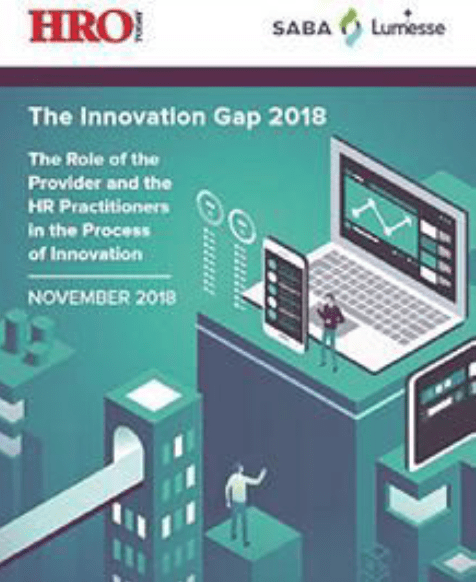 Innovations in artificial intelligence and analytics, along with development in cloud, social and mobile technologies, are making HR systems more intelligent and more engaging. But do the innovations being made reflect the needs of HR practitioners?
Innovations in artificial intelligence and analytics, along with development in cloud, social and mobile technologies, are making HR systems more intelligent and more engaging. But do the innovations being made reflect the needs of HR practitioners?
In 2011, HRO Today surveyed its reader base and found that there was a disconnect between what HR service partners thought they were delivering and what practitioners believed they were getting. The study, sponsored by Saba, was repeated in 2018, and reexamines opinions to see if they have changed over the last seven years, as well as identifying the areas most impacted by technology innovation.
When the first wave of this study was completed in 2011, the prevailing conclusion was clear. HR practitioners and technology partners were far apart with respect to their attitudes about the technology being offered to HR practitioners. At that time, HR service partners considered the technology they offered far more important, more innovative, more applicable to HR workflow, and more useful to key stakeholders than did practitioners.
In 2018, that perception largely remained in place, though the gap between views of practitioners and HR service partners across each measure has narrowed considerably.
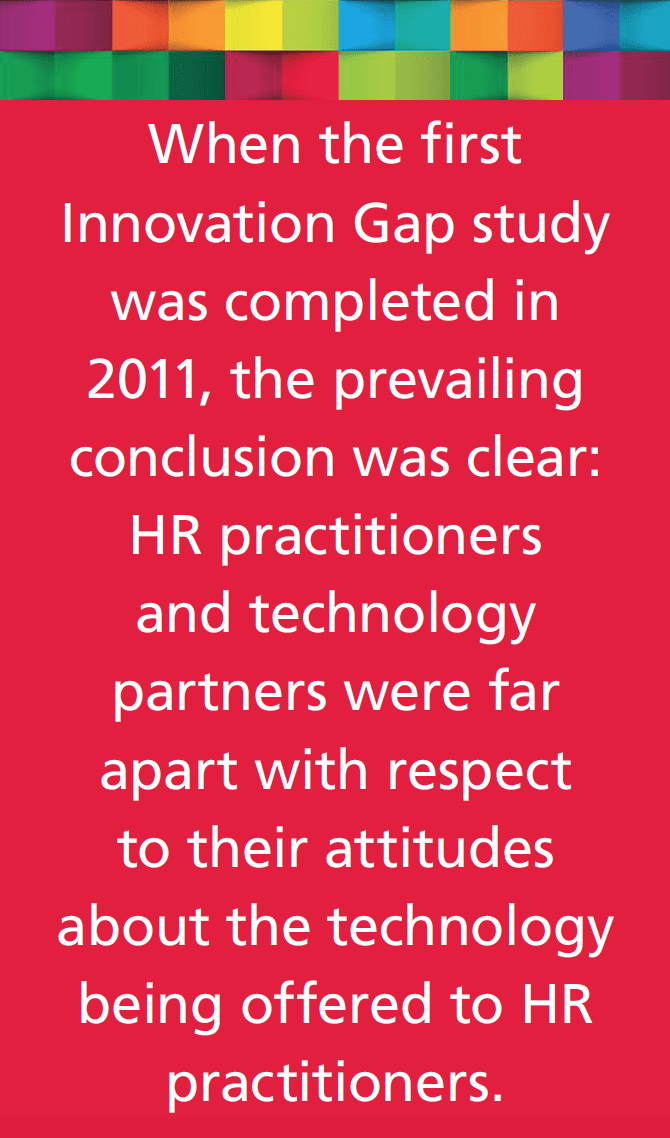 Technology innovation is considered important by the vast majority of study participants, both HR service partners and HR practitioners. Technology is transforming how HR operates, and it couldn’t do that without considerable respect for the innovation being employed. But there is a difference in opinion as to its importance across talent management applications, performance management, and HRIS. Technology partners are offering innovation, but HR isn’t as enthusiastic about the specific functionality as the providers.
Technology innovation is considered important by the vast majority of study participants, both HR service partners and HR practitioners. Technology is transforming how HR operates, and it couldn’t do that without considerable respect for the innovation being employed. But there is a difference in opinion as to its importance across talent management applications, performance management, and HRIS. Technology partners are offering innovation, but HR isn’t as enthusiastic about the specific functionality as the providers.
Consistent with the gap between HR service partner and practitioner opinions about the importance of HR innovation, there is another difference in opinion about if technology change is truly innovative. HR service partners are far more likely to believe in their own technology innovation prowess than are HR practitioners, again across talent management, performance management, and HRIS systems. The extent of this difference in opinions has narrowed since 2011, but that difference still remains significant.
Workflow applicability also impacts opinions about technology innovation. In 2018, three-quarters (75 percent) of HR service partners overwhelmingly indicated that they thought the talent management innovations were directed toward workflow impact. That compared to only about one-third (37 percent) of practitioners. Opinions about performance management and HRIS technology followed a similar pattern. Practitioners don’t necessarily feel the focus of innovation is on workflow.
HR service partners might gain more buy-in for new technology usage by consulting more with practitioners about how their business strategy aligns with their use of technology. Less than one-quarter of practitioners feel partners often consult with them. Soliciting input and collaborating more with practitioners might lead to a greater acceptance that the innovations being made are applicable to workflow.
See more here.
THE IMPORTANCE OF CONTINGENT WORKFORCE AND EMPLOYER BRANDING
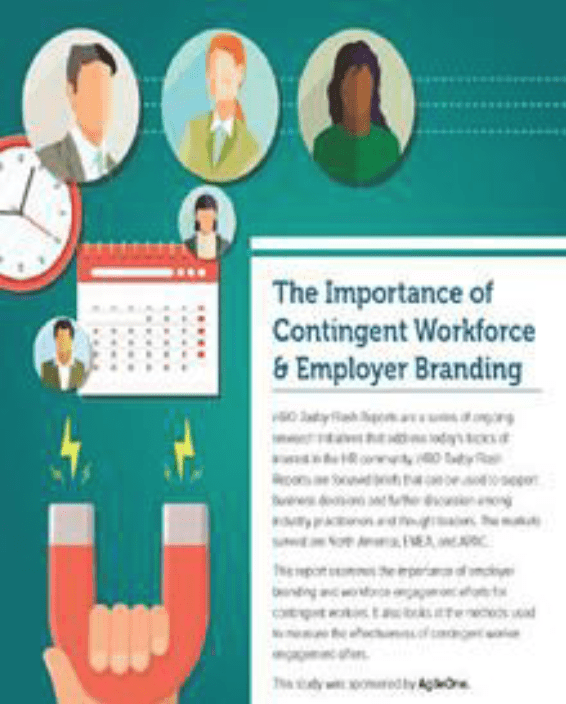 This report, sponsored by AgileOne, examines the importance of employer branding and workforce engagement efforts for contingent workers. It also looks at the methods used to measure the effectiveness of contingent worker engagement offers.
This report, sponsored by AgileOne, examines the importance of employer branding and workforce engagement efforts for contingent workers. It also looks at the methods used to measure the effectiveness of contingent worker engagement offers.
Nearly three-quarters (71 percent) of study participants felt contingent workers were an important part of their employment mix. The importance placed on contingent workers isn’t surprising given there are approximately 6 million workers classified as contingent in the U.S.
Despite the degree of importance placed on contingent workers, the percentage of study respondents feeling their employer brand is important in attracting contingent workers is 60 percent, significantly lower than the level of importance attached to attracting and retaining full-time employees. Using the employer brand to attract contingent workers is a completely lost opportunity for up to 40 percent of companies.
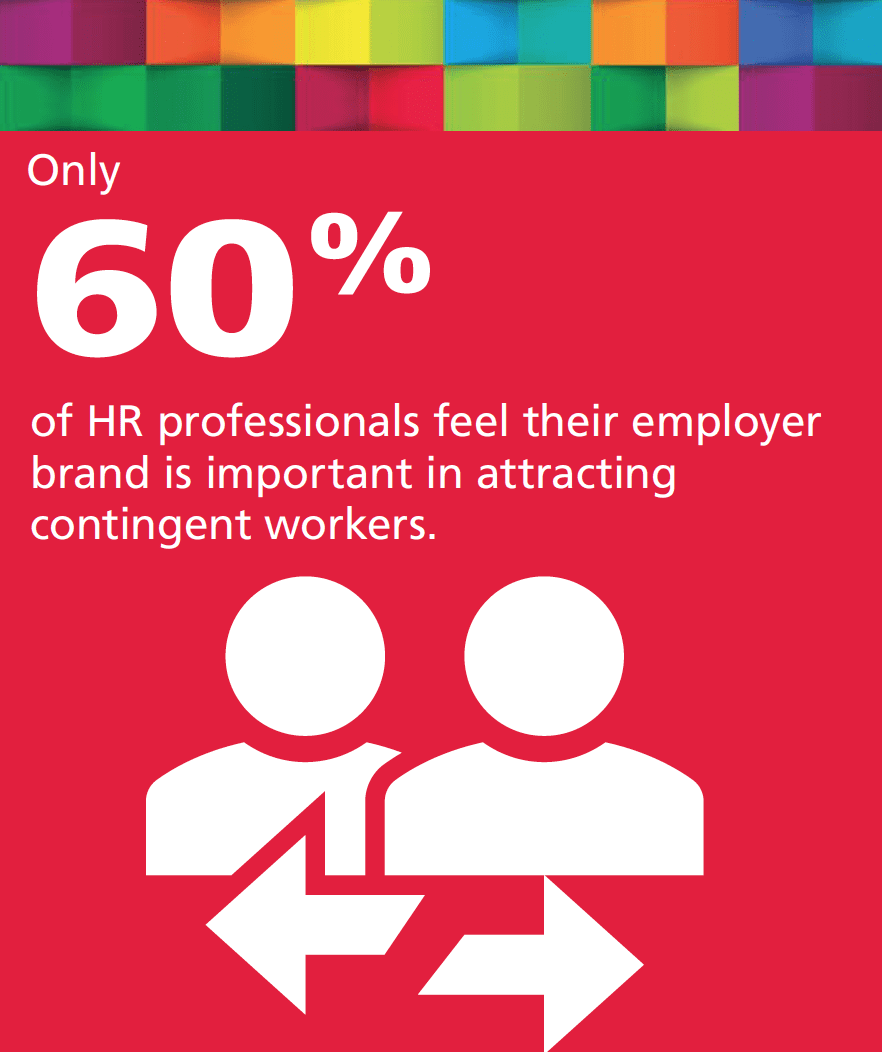 Just over two-thirds of those surveyed measure the effectiveness of their contingent worker engagement efforts, meaning one-third of those who use contingent workers make no attempt to measure the effectiveness of their engagement efforts. Further, one-half of those not measuring worker engagement effectiveness reported that contingent workers are important to them, suggesting more metrics around how well their engagement efforts are performing would also be important to them. The method most often used to measure the effectiveness of contingent engagement is monitoring social proof sites, indicated by over two-thirds (67 percent) of respondents. Only about one-third (37 percent) take advantage of contingent worker satisfaction surveys to measure the effectiveness of engagement efforts.
Just over two-thirds of those surveyed measure the effectiveness of their contingent worker engagement efforts, meaning one-third of those who use contingent workers make no attempt to measure the effectiveness of their engagement efforts. Further, one-half of those not measuring worker engagement effectiveness reported that contingent workers are important to them, suggesting more metrics around how well their engagement efforts are performing would also be important to them. The method most often used to measure the effectiveness of contingent engagement is monitoring social proof sites, indicated by over two-thirds (67 percent) of respondents. Only about one-third (37 percent) take advantage of contingent worker satisfaction surveys to measure the effectiveness of engagement efforts.
One of the reasons organizations use contingent labor is to evaluate a prospective employee prior to bringing them into the organization as a member of their full-time workforce. This is validated by the fact that over one-half (56 percent) considered contingent workers an important or very important source of talent for their full-time workforce, further illustrating the importance of sharing your employer brand with contingent workers.
See more here.












